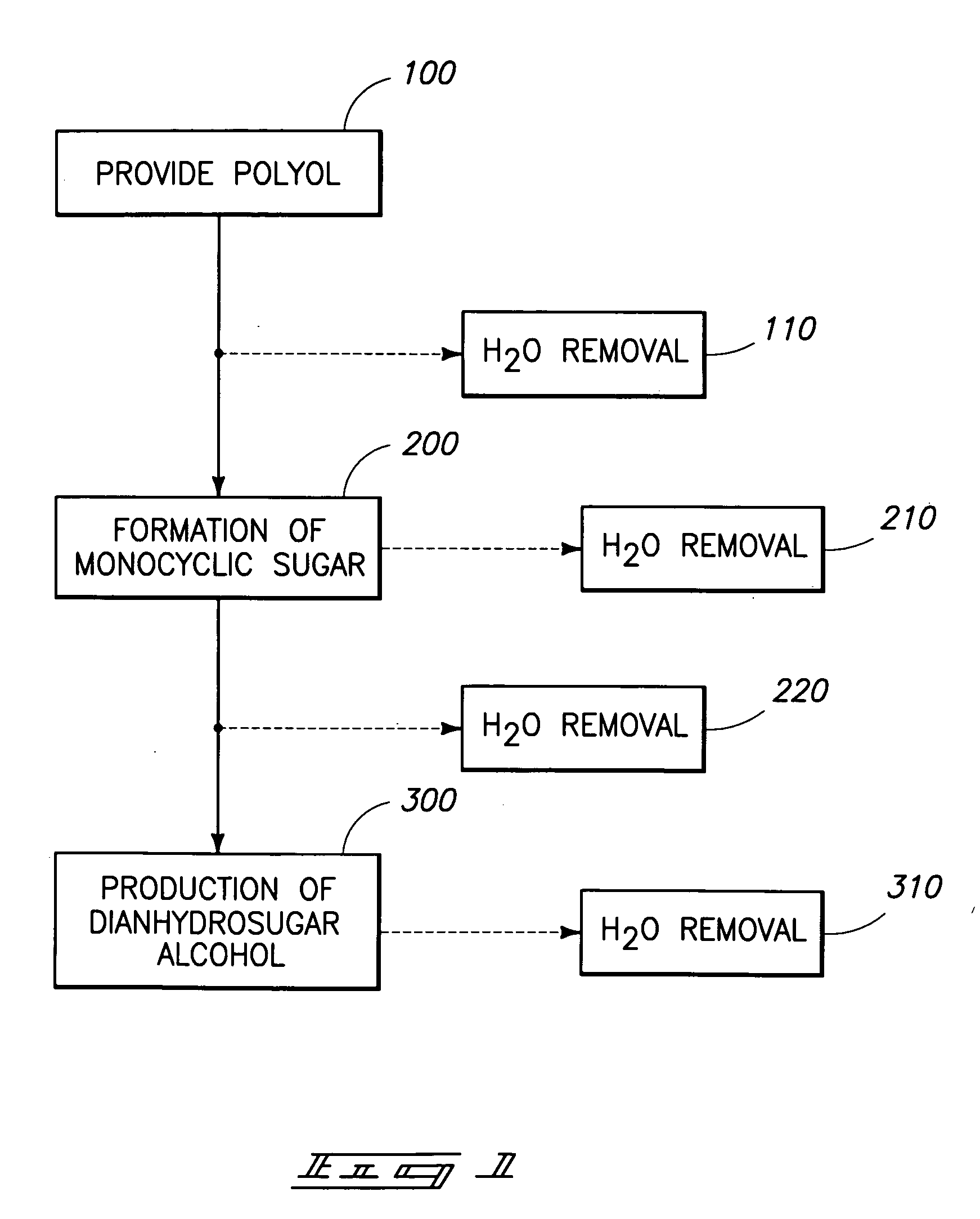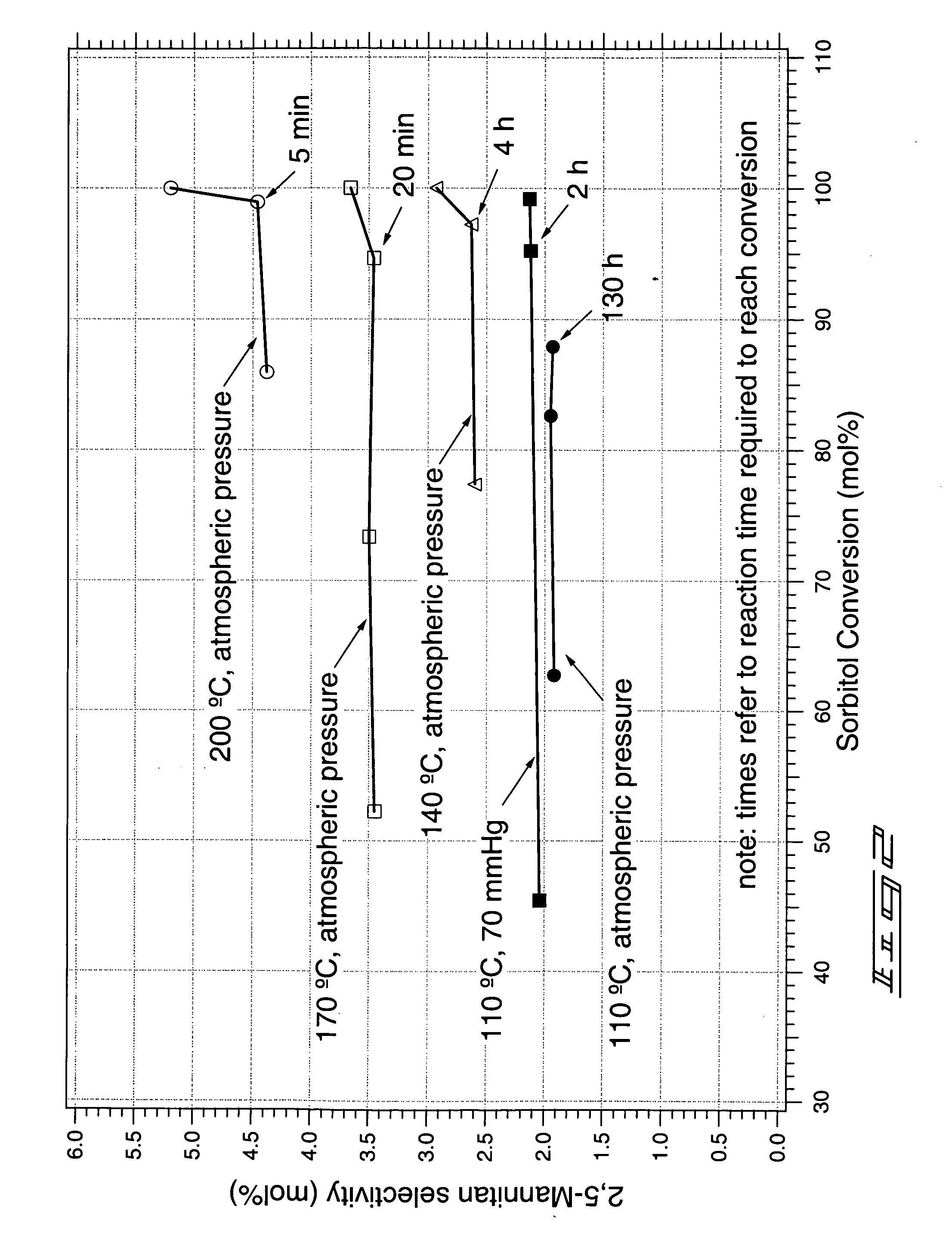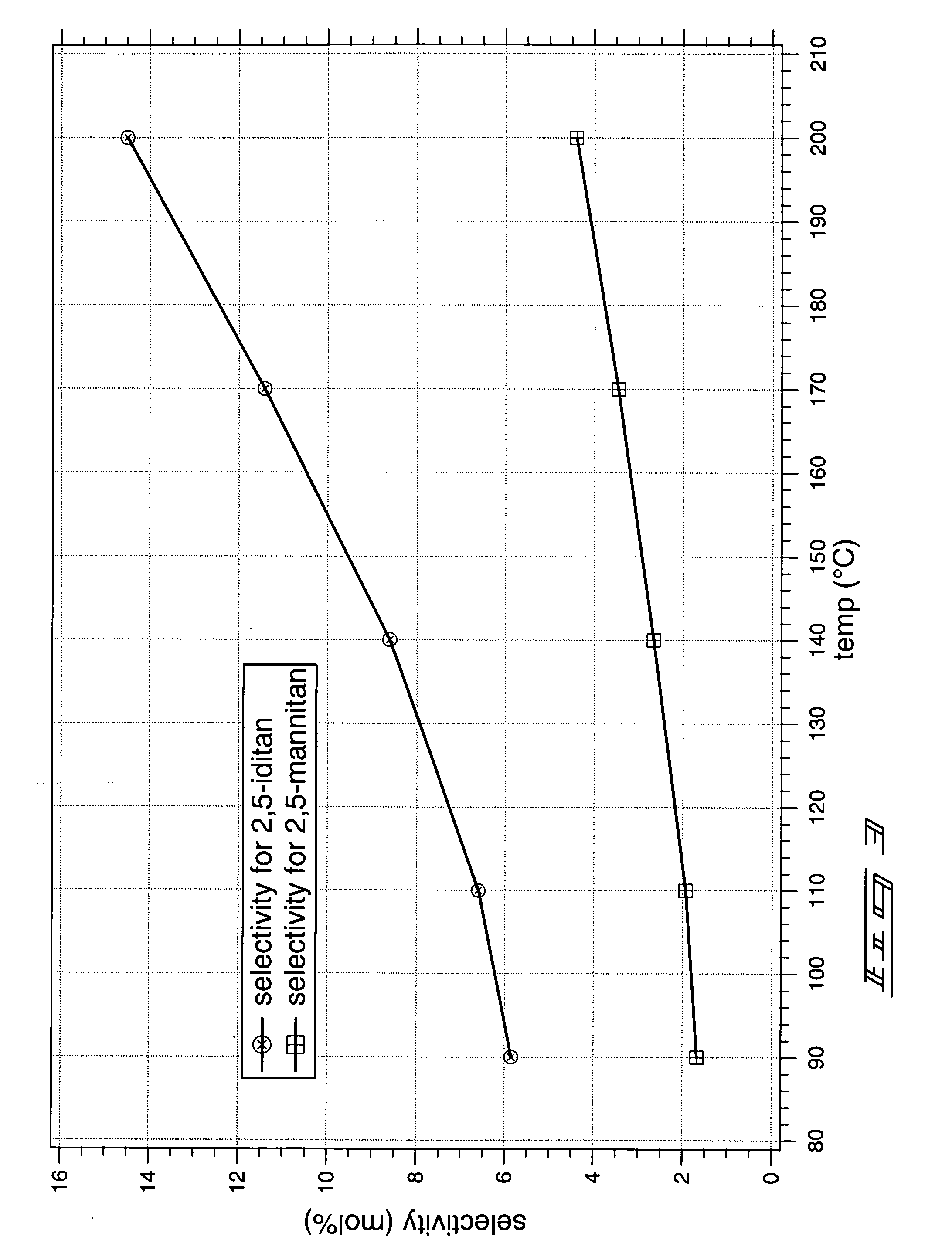Method of forming a dianhydrosugar alcohol
a technology of dianhydrosugar alcohol and dianhydrosugar alcohol, which is applied in the preparation of sugar derivates, oxygen-containing compounds, drug compositions, etc., can solve the problems of environmental unfriendly, inefficient, and high cost of conventional production of dianhydrosugar alcohol such as isosorbid
- Summary
- Abstract
- Description
- Claims
- Application Information
AI Technical Summary
Benefits of technology
Problems solved by technology
Method used
Image
Examples
example 1
Acid Catalyzed Conversion of Sorbitol to Isosorbide
[0051] Reaction A: In a flask, 50 grams (g) of sorbitol was heated to a temperature of about 135° C. Sulfuric acid (0.5 g) was added. The reaction was conducted for about 2.5 hours with stirring, at a temperature of about 135° C. and a pressure of about 70 mmHg. The flask was then removed from heat and vacuum. Analysis by HPLC indicated a molar yield of isosorbide relative to the starting sorbitol of about 75%.
[0052] Reaction B: A mixture containing 50 g of sorbitol and 5 g of water was heated to a temperature of about 90° C. Vacuum was then applied (to about 10 mmHg) to remove water from the mixture. Subsequently, sulfuric acid (0.5 g) was added and the pressure was returned to about 10 mmHg. The reaction was stirred for 10 hours at 90° C. at a pressure of about 10 mmHg, after which time approximately 95% of the sorbitol had been depleted. The reaction temperature was then increased to 100° C. for a period of 8 hours. The reacti...
example 2
Production and Two Step Distillation of Isosorbide
[0056] Sorbitol (1018 g, 5.590 mol) was heated a reaction vessel to a temperature of about 120° C. reacted in the presence of approximately 120 g of AMBERLYST® 35 catalyst (Rohm and Hass Company, Philadelphia, Pa.). The reaction was conducted at a pressure of about 10 mmHg and at a maintained temperature of about 120° C. for 5 hours. Water collection during the 5 hour reaction period recovered about 200 g of produced water, indicating completion of the reaction. The resulting mixture was filtered to remove the catalyst. Upon removal of the catalyst, about 725.5 g of dark, highly viscous crude product was recovered.
[0057] The crude product was distilled utilizing a batch distillation apparatus. A first portion of isosorbide distilled out over a temperature between about 145° C. and 150° C. The first portion was a clear, nearly colorless oil which upon cooling formed white crystals. The crystallized first portion had an isosorbide p...
PUM
| Property | Measurement | Unit |
|---|---|---|
| Temperature | aaaaa | aaaaa |
| Temperature | aaaaa | aaaaa |
| Temperature | aaaaa | aaaaa |
Abstract
Description
Claims
Application Information
 Login to View More
Login to View More - R&D
- Intellectual Property
- Life Sciences
- Materials
- Tech Scout
- Unparalleled Data Quality
- Higher Quality Content
- 60% Fewer Hallucinations
Browse by: Latest US Patents, China's latest patents, Technical Efficacy Thesaurus, Application Domain, Technology Topic, Popular Technical Reports.
© 2025 PatSnap. All rights reserved.Legal|Privacy policy|Modern Slavery Act Transparency Statement|Sitemap|About US| Contact US: help@patsnap.com



